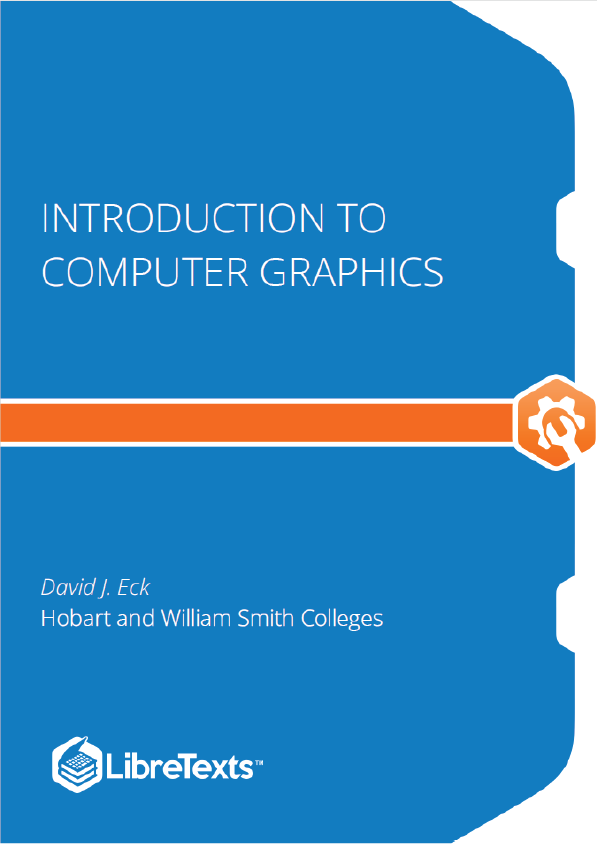The term “computer graphics” refers to anything involved in the creation or manipulation of images on computer, including animated images. It is a very broad field, and one in which changes and advances seem to come at a dizzying pace. It can be difficult for a beginner to know where to start. However, there is a core of fundamental ideas that are part of the foundation of most applications of computer graphics. This book attempts to cover those foundational ideas, or at least as many of them as will fit into a one-semester college-level course. While it is not possible to cover the entire field in a first course—or even a large part of it— this should be a good place to start.
This short chapter provides an overview and introduction to the material that will be covered in the rest of the book, without going into a lot of detail.
The main focus of this book is three-dimensional (3D) graphics, where most of the work goes into producing a 3D model of a scene. But ultimately, in almost all cases, the end result of a computer graphics project is a two-dimensional image. And of course, the direct production and manipulation of 2D images is an important topic in its own right. Furthermore, a lot of ideas carry over from two dimensions to three. So, it makes sense to start with graphics in 2D.
An image that is presented on the computer screen is made up of pixels. The screen consists of a rectangular grid of pixels, arranged in rows and columns. The pixels are small enough that they are not easy to see individually. In fact, for many very high resolution displays, they become essentially invisible. At a given time, each pixel can show only one color. Most screens these days use 24-bit color, where a color can be specified by three 8-bit numbers, giving the levels of red, green, and blue in the color. Any color that can be shown on the screen is made up of some combination of these three “primary” colors. Other formats are possible, such as grayscale, where each pixel is some shade of gray and the pixel color is given by one number that specifies the level of gray on a black-to-white scale. Typically, 256 shades of gray are used. Early computer screens used indexed color, where only a small set of colors, usually 16 or 256, could be displayed. For an indexed color display, there is a numbered list of possible colors, and the color of a pixel is specified by an integer giving the position of the color in the list.
In any case, the color values for all the pixels on the screen are stored in a large block of memory known as a frame buffer. Changing the image on the screen requires changing color values that are stored in the frame buffer. The screen is redrawn many times per second, so that almost immediately after the color values are changed in the frame buffer, the colors of the pixels on the screen will be changed to match, and the displayed image will change.
A computer screen used in this way is the basic model of raster graphics. The term “raster” technically refers to the mechanism used on older vacuum tube computer monitors: An electron beam would move along the rows of pixels, making them glow. The beam was moved across the screen by powerful magnets that would deflect the path of the electrons. The stronger the beam, the brighter the glow of the pixel, so the brightness of the pixels could be controlled by modulating the intensity of the electron beam. The color values stored in the frame buffer were used to determine the intensity of the electron beam. (For a color screen, each pixel had a red dot, a green dot, and a blue dot, which were separately illuminated by the beam.)
A modern flat-screen computer monitor is not a raster in the same sense. There is no moving electron beam. The mechanism that controls the colors of the pixels is different for different types of screen. But the screen is still made up of pixels, and the color values for all the pixels are still stored in a frame buffer. The idea of an image consisting of a grid of pixels, with numerical color values for each pixel, defines raster graphics.











